Science
(www.olympiadsuccess.com)
Chapter 9: Heredity and Evolution
Class: X
Exercises
Question 1
A Mendelian experiment consisted of breeding tall pea plants bearing violet flowers with short pea plants bearing white flowers. The progeny all bore violet flowers, but almost half of them were short. This suggests that the genetic make-up of the tall parent can be depicted as-
Answer 1
1.TtWW depicts the genetic make-up of the tall parent.
Question 2
An example of homologous organs is-
Answer 2
3.Our teeth and an elephant’s tusks
Question 3
In evolutionary terms, we have more in common with:
Answer 3
3.We have more in common with a Chinese school boy, in terms of evolution.
Question 4
A study found that children with light - coloured eyes are likely to have parents with light coloured eyes. On this basis, can we say anything about whether the light eye colour trait is dominant or recessive? Why or why not?
Answer 4
Children with light - coloured eyes can either have LL or Ll or ll
genotype. If the children have LL genotype, then their parents will also be of LL genotype, that is-
LL × LL à LL
If the children with light-coloured eyes have ll genotype, then their parents will also have
ll genotype,that is-
ll × ll à
Hence, we can’t conclude, whether light eye colour is dominant or recessive.
Question 5
How are the areas of study − evolution and classification − interlinked?
Answer 5
The gradual process of development in an organism is called evolution, resulting in the emergence of a new specie. Classification or Taxonomy is the grouping and categorizing the organisms. Organism in one group has similar characteristics. Evolution explains how closely two organisms are related or how different they are, and theses information are used to classify organisms in Taxonomy. Therefore, we can conclude that Evolution and Classification go together supporting each other.
Question 6
Explain the terms analogous and homologous organs with examples.
Answer 6
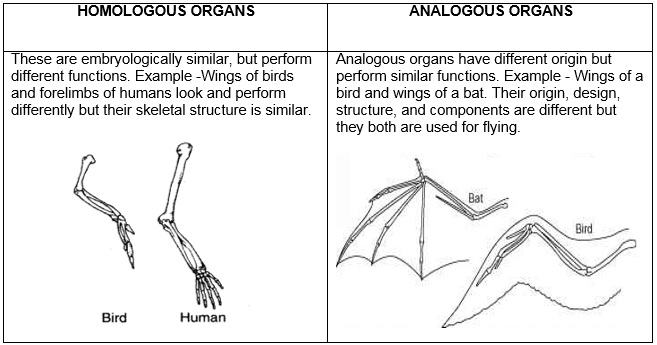
Question 7
Outline a project which aims to find the dominant coat colour in dogs.
Answer 7
Variety of genes that govern coat colour in dogs. At least eleven identified
gene series (A, B, C, D, E, F, G, M, P, S, T) are there that influence coat colour in dog.
One gene from each of its parents is inherited by a dog. The dominant gene gets expressed in the phenotype. For example -Series B, can have a dog, genetically black or brown. Suppose one parent is homozygous black (BB), while the other parent is
homozygous brown (bb).
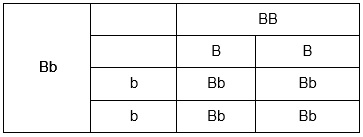
Here, all the offspring will be heterozygous (Bb).
All the offspring will be black, because black (B) is dominant. But, they will have both
B and b alleles.
If such heterozygous dogs are crossed, their offspring will be 25% homozygous black (BB),
50% heterozygous black (Bb), and 25% homozygous brown (bb).
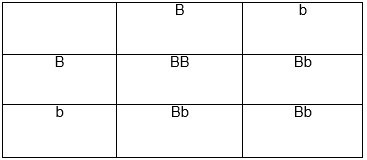
Question 8
Explain the importance of fossils in deciding evolutionary relationships.
Answer 8
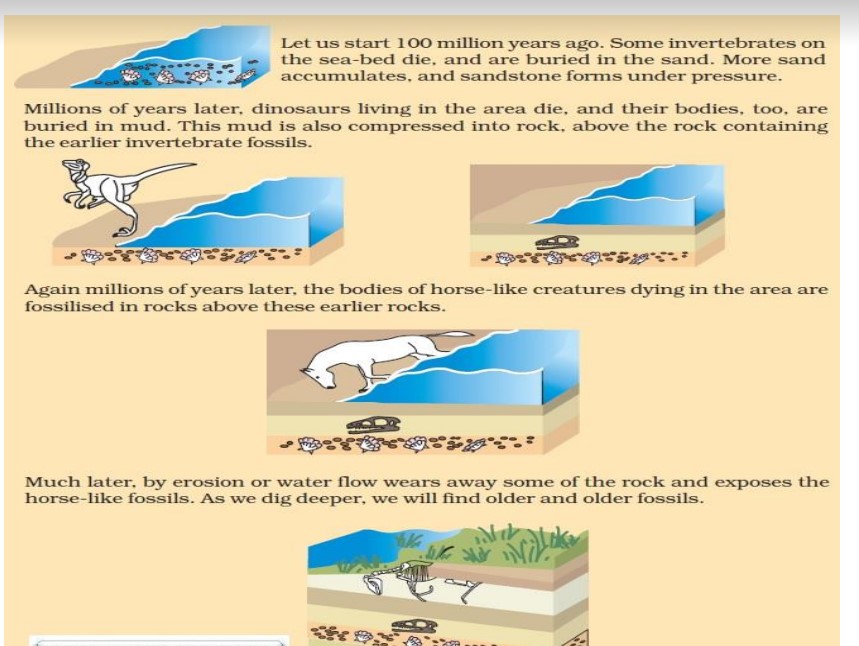
Fossils are the remains of organism formed over a million of years of time. It gives us the information about how closely two organisms are related. It also shows how the changes in the characteristic of the past organisms which are there in the present organisms, and how new species are developed from old one. For example - Fossil records of certain mammals like horse, elephant, camel, man, etc. if arranged according to geological time scale it would present a complete series indicating about their evolution. Thus we can say that Fossils are very important in deciding evolutionary relationship.
Question 9
What evidence do we have for the origin of life from inanimate matter?
Answer 9
An experiment done by a scientists Miller and Urey shows the evidence of origin of life from Inanimate matter. To prove this they took a closed atmosphere filled with methane(CH4), ammonia(NH3), hydrogen(H2), over water (H2O), but no oxygen(O2), similar to the atmosphere that was thought to be present on early eart. The temperature was kept just under 100oC.Then they passed a continuous electric current through it. This was done to simulate lightning storms assumed to be common on early earth. Almost after a week they found out that 10-15% of the carbon was in organic compound form. 2% of the carbon produced some amino acid that is used to make proteins molecules which gave rise to life on earth.
This experiment demonstrated that organic compounds such as amino acids, which are essential for cellular life, could easily be made under the conditions that scientists believed to be present on the early earth.
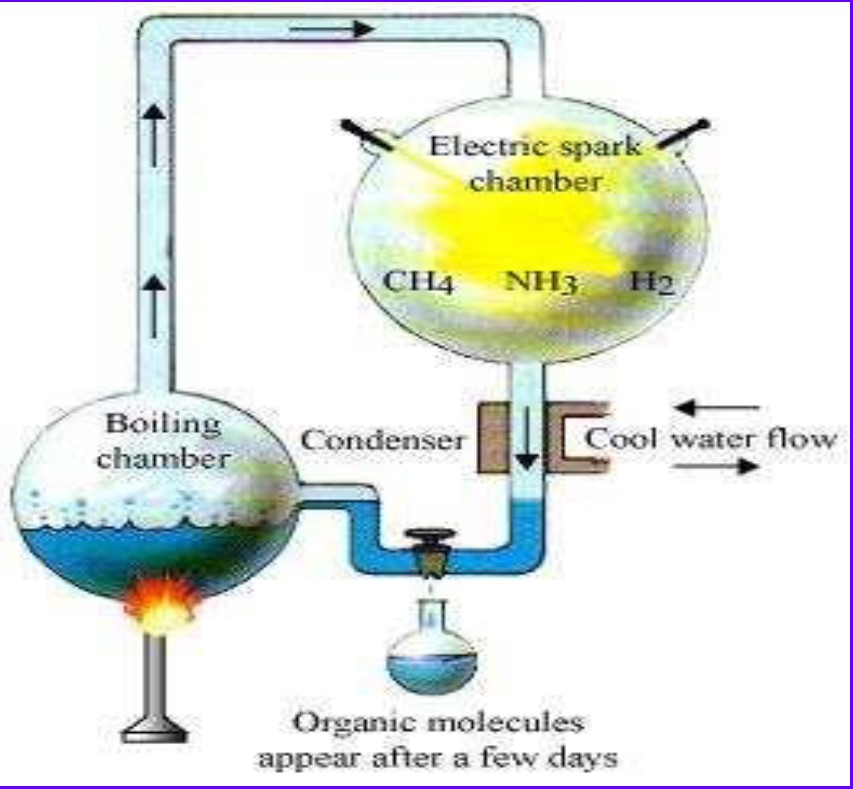
Miller and Urey Experiment
Question 10
Explain how sexual reproduction gives rise to more viable variations than asexual
reproduction. How does this affect the evolution of those organisms that reproduce
sexually?
Answer 10
Two individuals having different variations combine their DNA to give rise to a new individual, in sexual reproduction. allowing more variations. In asexual reproduction, variations can only be possible when the copying of DNA is not accurate. In asexual reproduction, the resultant DNA
will not be able to survive inside the inherited cellular apparatus, if there are more variations therefore, allowing very less variations. Whereas, in sexual reproduction, more variations are there along with the survival of the resultant DNA, thus making the variations feasible.
Variation and Evolution Of Sexually Reproducing Organisms
Environmental conditions such as heat, light, and food availability can change
suddenly at any place. At that time, only those variants resistant to these conditions
would be able to survive. This will gradually lead to the evolution of a better adapted species.
Hence, variation aids to the evolution of sexually reproducing organisms.
Question 11
How is the equal genetic contribution of male and female parents ensured in the progeny?
Answer 11
Every somatic cell in the body of human beings, contain 23 pairs of chromosomes. The first 22 pairs are called autosomes and the remaining one pair is called sex chromosome shown as X and Y. There are two X chromosomes for Female and one X and one Y chromosome for Male. Half of the chromosomes are received by the gametes. So, the male gamete have 22 autosomes and either X or Y chromosome, and the female gamete will have 22 autosomes and X chromosome. Male and female gametes fuse during sexual reproduction and the progeny receives 22 autosome and X chromosome from female parent and 22 autosome and either X or Y chromosome from male parent. This is how the equal genetic contribution of male and female parents are ensured in progeny.
Question 12
Only variations that confer an advantage to an individual organism will survive in a
population. Do you agree with this statement? Why or why not?
Answer 12
Variations that offer survival advantages are naturally selected in species. With the help of these variations, individuals adjust to their environments. These variations are passed on to their progeny. The natural selection of the organisms help them in their evolution.
But, there may be some other variations, which do not have any survival advantage and occurs only accidentally. These variations can change the frequency of some genes even if they are not significant for survival. The accidental change in the frequency of genes in small population is called genetic drift. Therefore, genetic drift gives variations without any survival advantage.
Yearlong program for Olympiads preparation & to build necessary skills for future.
Explore More
Time to mark your calendar with the upcoming Olympiads exam schedule.
Explore More
Take your Olympiad preparation to next-level by taking LIVE Classes.
Explore More
Assess your performance by taking topic-wise and full length mock tests.
Explore More
Online tuitions for international compeitions like SASMO, SEAMO, etc for Grades 1-11.
Explore More